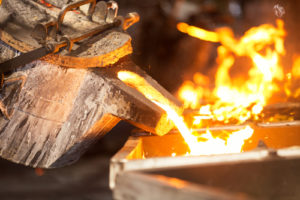Customers seek functionality from a casting, and only the best practices help die casters meet those requirements. The below-given five practices help foundries come up with the best outputs possible in die cast mold making. The top foundries out there follow these aspects to make a casting that provides the best functionality.
Keep the Wall Thickness Uniform across Castings
Keeping a consistent wall thickness across castings is not possible always, so their attempt is to keep variations in them to a bare minimum. This is what improves the molten metal’s flow and casting’s filling for better quality. It also reduces dimensional variation owing to the distinctions in cooling rates in the walls of a casting.
Corner and Fillet Radii on a Casting Should Be as Big as Possible
Radii outside and inside the corners on a casting should be as big as possible. This is what enhances the filling for improved quality and improves the life of die owing to reducing of die steel’s degradation in sharp corners.
Include Drafts in the Design of a Casting

Die Casting Tips
Taper draft on a casting’s inside walls should be more than on its outside walls. The same reasoning is used in muffin tins’ designs, which also have tapered walls for help in removing them. More draft is required on the inside walls since an alloy used in die cast mold making shrinks just as it solidifies. A casting tends to get smaller and fit tightly onto its inside. The draft allows for its easier ejection from the die.
Maintain Important Dimensions on the Die’s Same Side
Because the die has moving pieces, dimensions based on over one of them will have more difference than those based on features in one die component. Superior dimensional variation will necessitate bigger tolerances, which may not be good enough to a casting’s function. When this happens, added operations on a casting are required in order to meet tolerances. This will add up to the cost, which is something foundries strategically avoid.
If Possible, Avoid Undercuts
Undercut geometry is not possible to be cast in a usual die. This necessitates the addition of a die member known as “slide” to cast its geometry’s this piece. The addition increases the die cast’s cost, since the undercut geometry adds up to the time necessitated to produce the casting.
